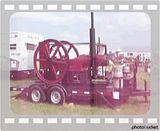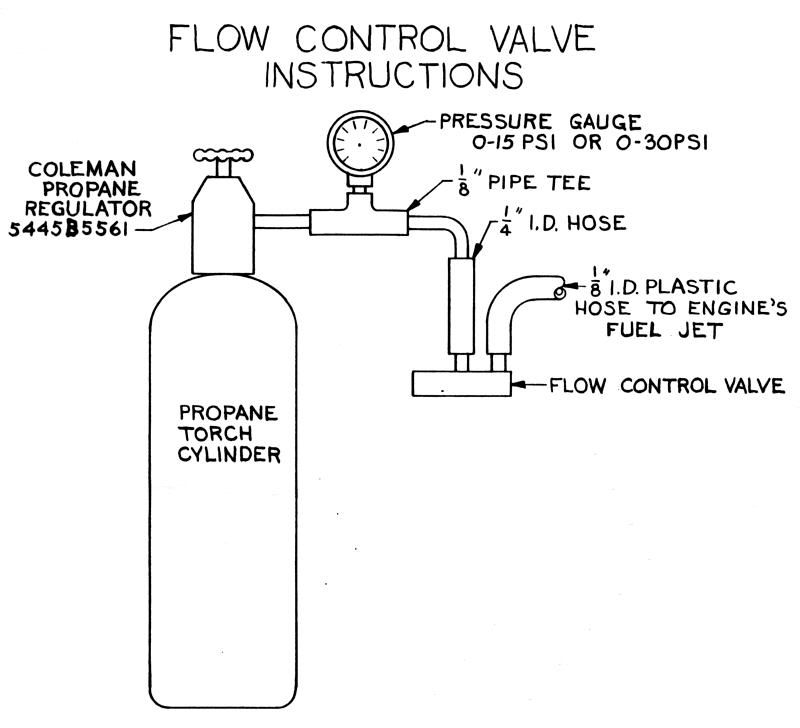Okay, this is an old thread... but I have some experience to offer, for what it's worth.
I have successfully run two hit & miss engines on propane (Stickney & John Deere), and it worked really well. It may take some futzing with orifice sizes, needle settings, etc. but it does make for a very clean running engine. It also seems to give a less "severe" firing -- more like
pushing on the piston, rather than hitting it with a hammer -- if that makes any sense. Less stress on the engine.
I purchased my propane setup from Leo Fellman around twelve years ago (I don't think he sells them anymore), which included the propane regulator, gauge, and demand valve. Here is the general layout for running an engine ("flow control valve" is another name for "demand valve"):
The 15 PSI regulator which screws on the propane cylinder is apparently still available from a few sources (though at least one other source listed it as "discontinued"):
http://www.amazon.com/dp/B000Q9AJZG/?tag=skimlinks_replacement-20
http://www.summitcampinggear.com/co15psire.html
http://www.ssotradingpost.com/product.sc?categoryId=9&productId=60
If you're interested in putting together a propane setup, you should probably get one of the Coleman regulators while they are still available. One source for the 15 PSI gauge is McMaster-Carr #3847K11.
As far as the demand valve, the one supplied by Mr. Fellman did not look exactly like the one in the F.A.M.E. plans. It was round, and had both inlet and outlet on the same side. It seemed like a simpler design. But I see no reason why the one detailed in the F.A.M.E. link wouldn't work just fine.
For some more detailed drawings, images of the Tecumseh parts needed, and view of the whole setup, visit Carl Carlsen's page at pbase.com:
http://www.pbase.com/captain_carl/_interesting_models&page=all
I would add that I was a bit reluctant to try propane at first (irrational fear?), but it really does work well, and my fears were unfounded.
Paula




































![DreamPlan Home Design and Landscaping Software Free for Windows [PC Download]](https://m.media-amazon.com/images/I/51kvZH2dVLL._SL500_.jpg)































